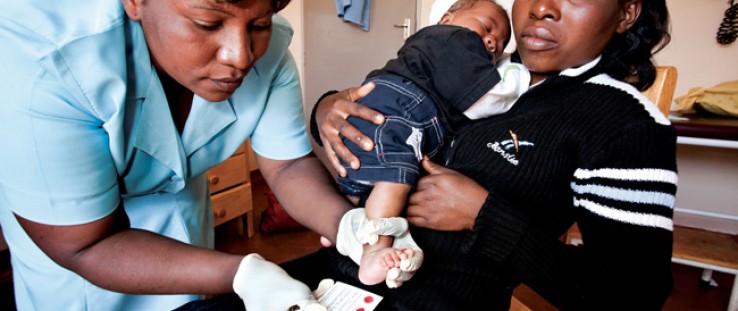 A nurse takes dried blood spot samples from an infant to test for HIV in a maternal and child health ward in a Malawi clinic. Through the Global Health Initiative, health workers in Malawi will travel door-to-door using mobile technology.
James Pursey, Elizabeth Glaser
A nurse takes dried blood spot samples from an infant to test for HIV in a maternal and child health ward in a Malawi clinic. Through the Global Health Initiative, health workers in Malawi will travel door-to-door using mobile technology.
James Pursey, Elizabeth Glaser
 A nurse takes dried blood spot samples from an infant to test for HIV in a maternal and child health ward in a Malawi clinic. Through the Global Health Initiative, health workers in Malawi will travel door-to-door using mobile technology.
James Pursey, Elizabeth Glaser
A nurse takes dried blood spot samples from an infant to test for HIV in a maternal and child health ward in a Malawi clinic. Through the Global Health Initiative, health workers in Malawi will travel door-to-door using mobile technology.
James Pursey, Elizabeth Glaser
The Global Health Initiative starts with a woman.
She lives in a rural community in Malawi with her husband. She has a young daughter and will have another child in a few months’ time. She has been diagnosed HIV positive.
She is also the center of her family—getting up early to fetch water, light the morning fire, prepare food, and tend crops.
Right now she needs vaccines for her daughter, treatment for her HIV, and care for the child in her womb. In her community, this means three different trips to three different clinics. The rainy season is here and roads are often impassable.
With all her responsibilities, she will have to choose which services her family gets and who will go without. The fragmented and poorly coordinated health system in her country forces her to make difficult tradeoffs about her family’s health.
She is a person for whom the Global Health Initiative (GHI), the Obama administration’s multi-year interagency effort aimed at improving and saving lives by strengthening health systems, is designed.
The Power of Holistic Thinking
USAID Administrator Rajiv Shah calls GHI a fundamentally different way of doing business. It is a push to think holistically about how to reach beneficiaries. And, it builds on the foundation of the U.S. Government’s HIV/AIDS and malaria programs, which have been deemed successful due in large part to strong coordination across U.S. agencies as well as the experts working in the field.
GHI aims to shift the paradigm from disease-focused initiatives to an approach that involves partnerships within, across, and beyond the U.S. Government. “There is too little coordination among all the countries and organizations, including in our own government, that deliver health services, so critical gaps in care are left unaddressed,” said Secretary of State Hillary Rodham Clinton during an Aug. 16, 2010, speech at the Johns Hopkins School of Advanced International Studies.
Strong partnerships are the foundation on which GHI will work to save the lives of mothers, children, and families by addressing: HIV/AIDS, malaria, infectious diseases like tuberculosis; maternal and child health; family planning; neglected tropical diseases; safe water; nutrition; sanitation; and hygiene.
At the core of GHI are seven principles:
- focusing on women, girls, and gender equality;
- stressing country ownership;
- creating sustainability;
- strengthening and leveraging partnerships with multilateral organizations and the private sector;
- increasing strategic coordination and integration within the U.S. Government;
- improving metrics, monitoring, and evaluation;
- and promoting robust research and innovation.
GHI will be implemented everywhere that USAID delivers health assistance. However, to start, eight countries have been selected as the first set of “GHI Plus” countries—Bangladesh, Ethiopia, Guatemala, Kenya, Malawi, Mali, Nepal, and Rwanda.
“GHI Plus countries are taking the lead to address difficult questions and respond to big cross-cutting health challenges. They are pathfinders that are helping to define questions and share lessons learned and best practices. For example, we are piloting new approaches to reach rural communities with quality health services,” said Amie Batson, deputy assistant administrator in the Bureau for Global Health.
Ground Truth
What GHI will look like on the ground will take more time to become clear. The Malawi mother with the mother lode of responsibilities, for example, would likely access health care through a community-based program. That is the only practical way to reach her and others who live in rural communities.
Through GHI, USAID also intends to implement electronic and mobile-health systems that support community health-care workers. These facilities will support real-time electronic data systems to assist health workers in reviewing patient records, identifying critical danger signs, and acting promptly to deliver care.
“Harnessing the potential of mobile health will open up new ways of tackling health challenges. For example, connecting health workers and communities allows us to move beyond brick and mortar health systems. Through GHI, USAID is capitalizing on these new technologies to achieve critical health impacts,” said Batson.
In communities in Malawi, health workers supported, trained, and retained with U.S. funding will travel door-to-door using mobile technology to deliver a combination of health services, including HIV testing and counseling, nutrition evaluations, family planning, and tuberculosis screening.
In a whole-of-government approach that is one of the cornerstones of the GHI, 120 Peace Corps volunteers across Malawi will serve as eyes and ears in remote communities, alerting decision makers about missed health opportunities and reporting progress to ensure that health care is provided equitably.
In places such as Kenya’s Eastern province, health workers pile into a “health wagon” and visit hard-to-reach communities, offering a wide range of crucial services before moving on to the next stop. (See story Health Services on Wheels: a One-Stop Shop)
In Mali, GHI is working to streamline into one health clinic visit the kinds of services that normally would require several trips, including vitamin A supplements, de-worming, and treatment for neglected tropical diseases.
A pilot effort reportedly boosted health coverage, while cutting delivery costs in half. Two-thirds of health workers surveyed thought it was a more efficient use of their time, and 80 percent thought it strengthened participation by the community.
Mali government officials hope to expand the program to reach 80 percent of pregnant women and children under age 5.
“Our Global Health Initiative is designed to efficiently deliver these results. Rather than create separate facilities to treat separate diseases, we will save money and expand the reach of coverage by integrating treatments into single points of care,” said Shah.







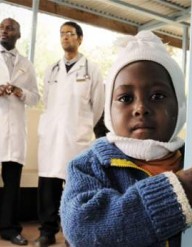

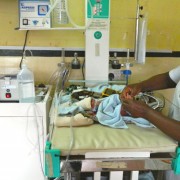
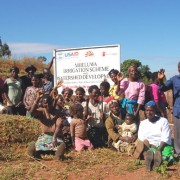
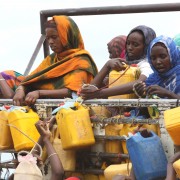
Comment
Make a general inquiry or suggest an improvement.